Nidularium viridipetalum
Click thumbnails for full size, scaled to a new window.
Nidularium viridipetalum
Previously in Australia as Nid. angustifolium which has blue petals as opposed to Nid. viridipetalum "green toward apex, becoming cream-colored after anthesis, without a bluish cast."


N.B. - There seems to be some problem with the description of petal colour as "green toward apex, becoming cream-colored after anthesis". Firstly its name translates as "green petals". Secondly the version grown in Australia, shown on 'Encyclopedea of Bromeliads', and in Lemme's book, have blue (slightly greenish?) petals.
'Our' viridipetalum certainly fits description in all other ways, particularly the primary bracts "dark wine toward base".

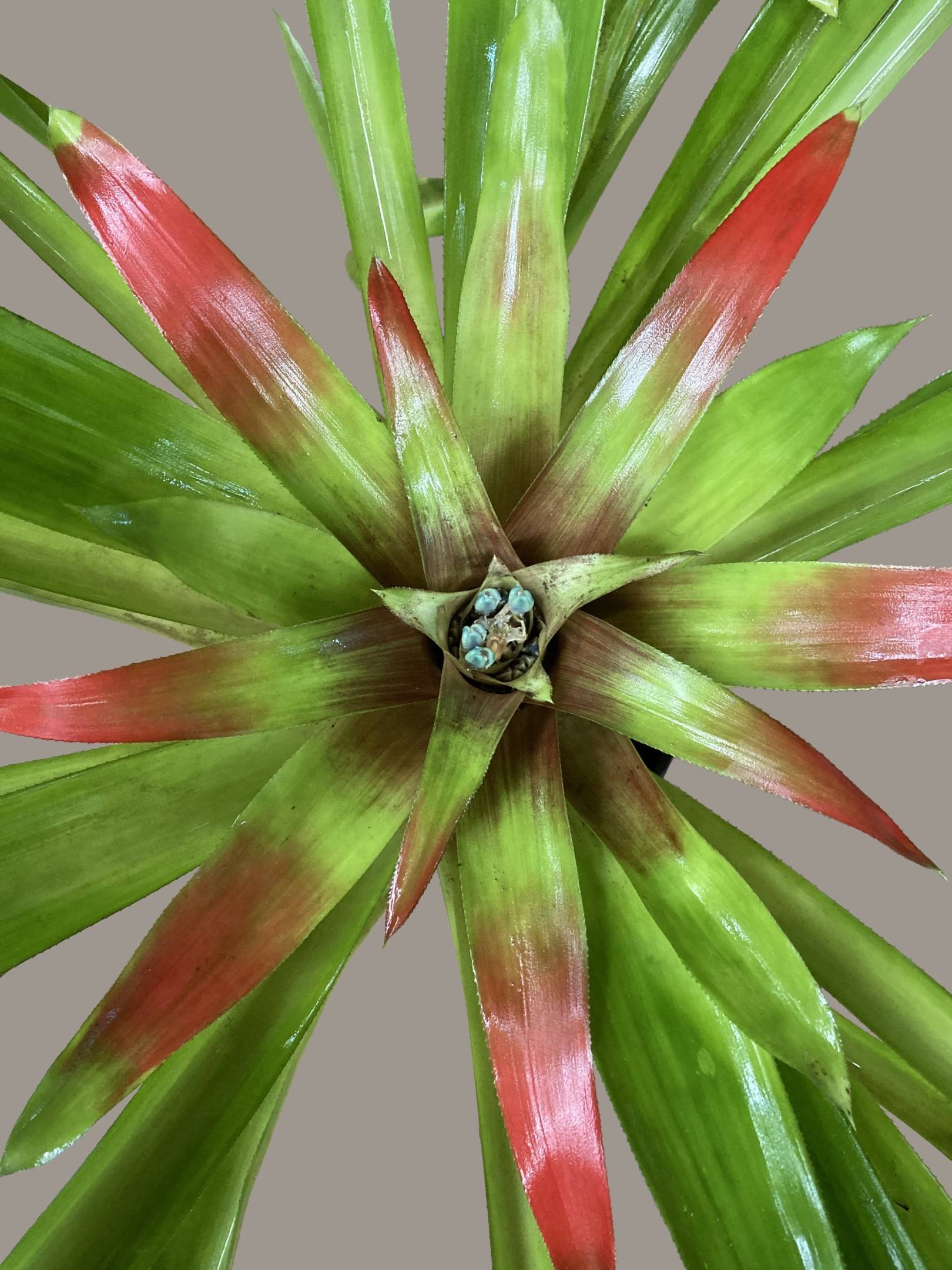
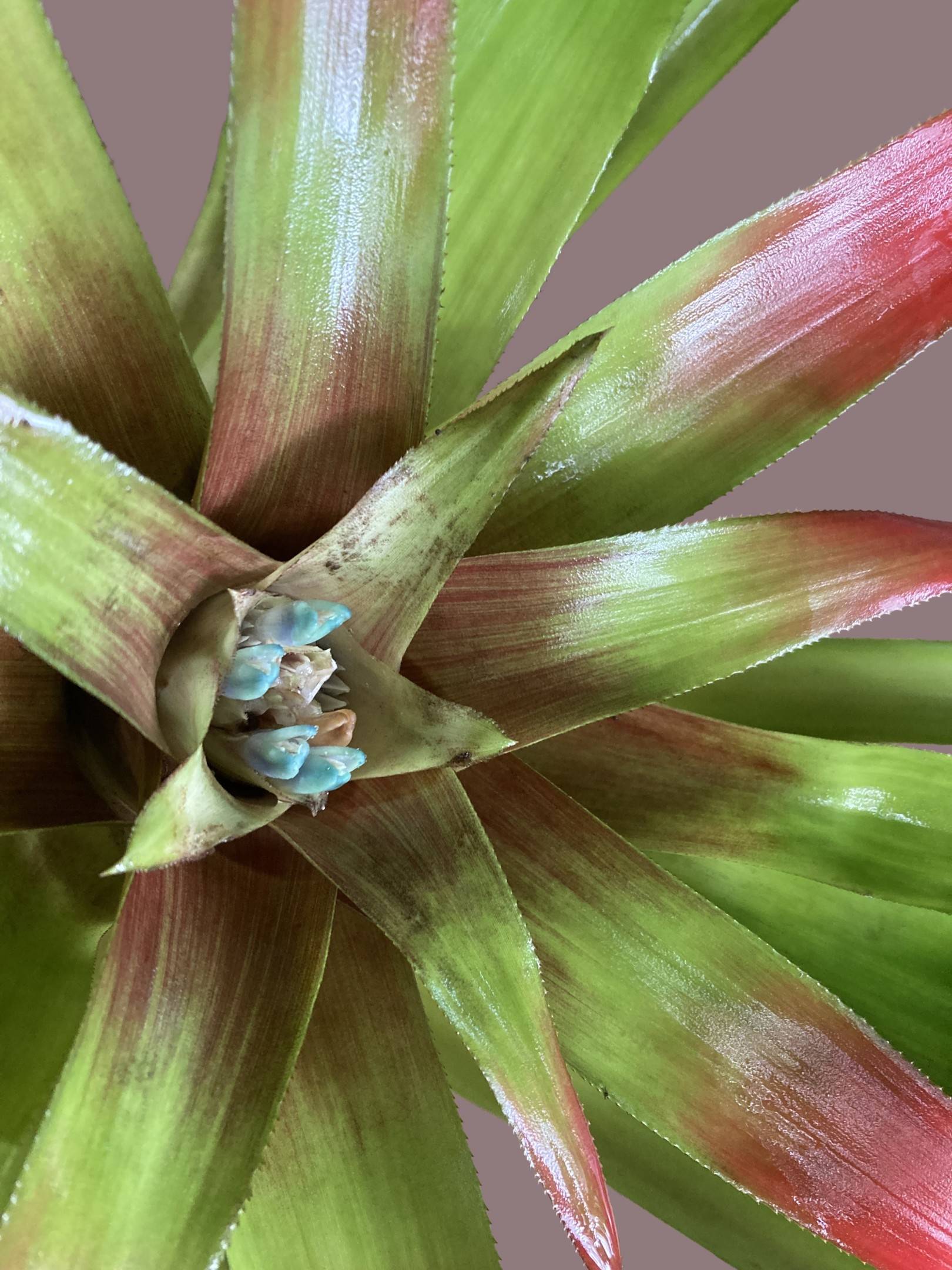
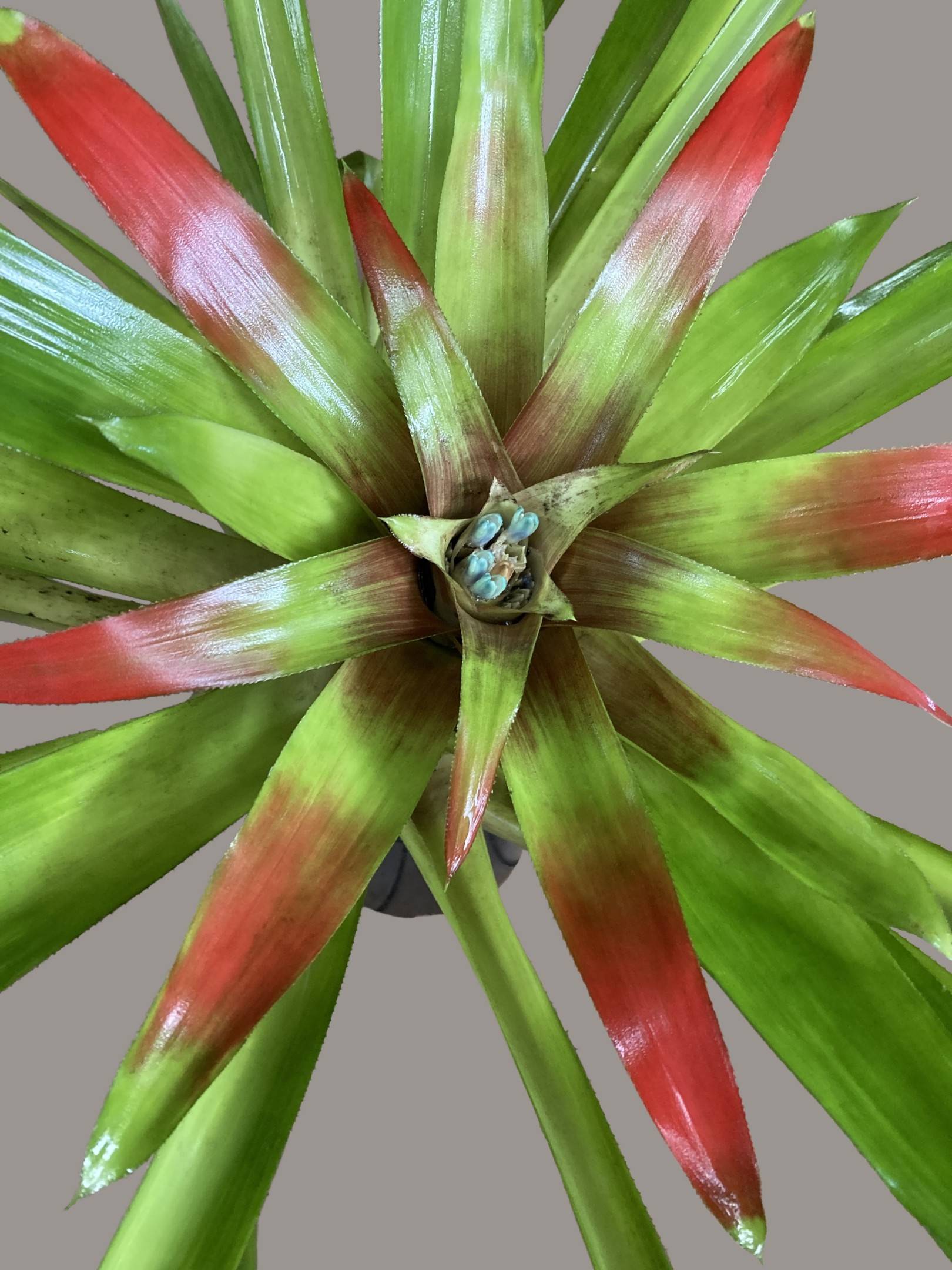
| Ian Hook 04/23 ex. Kerry McNicol |
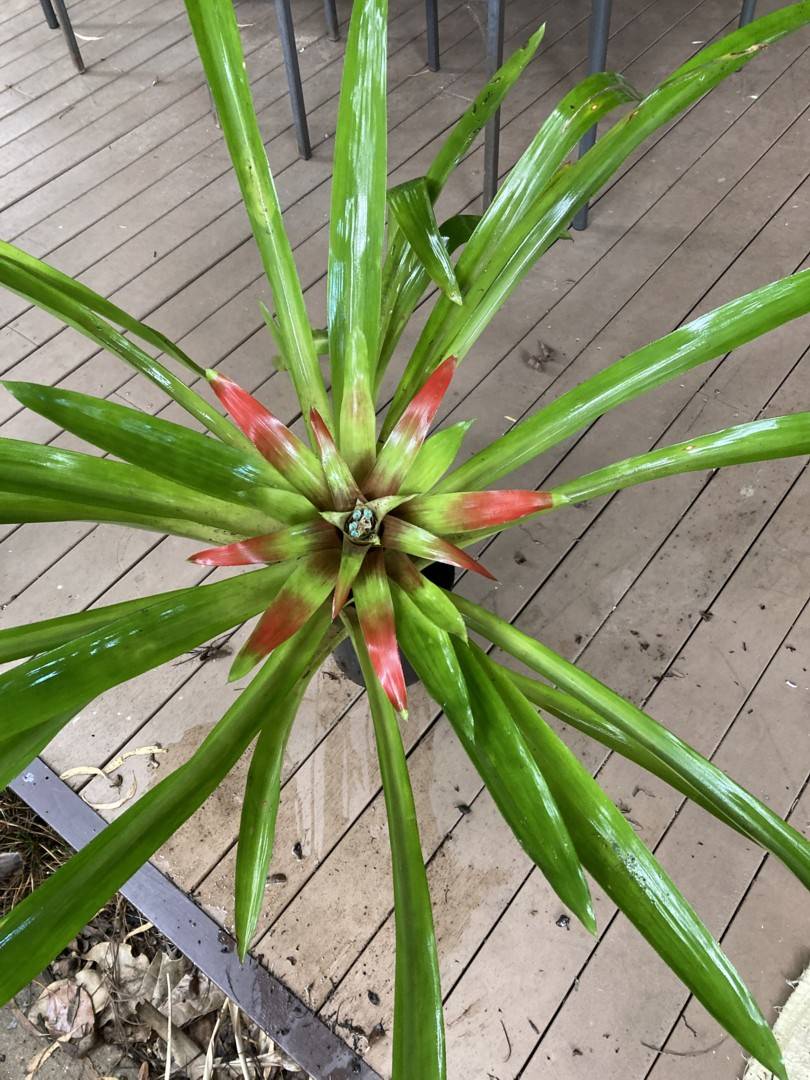
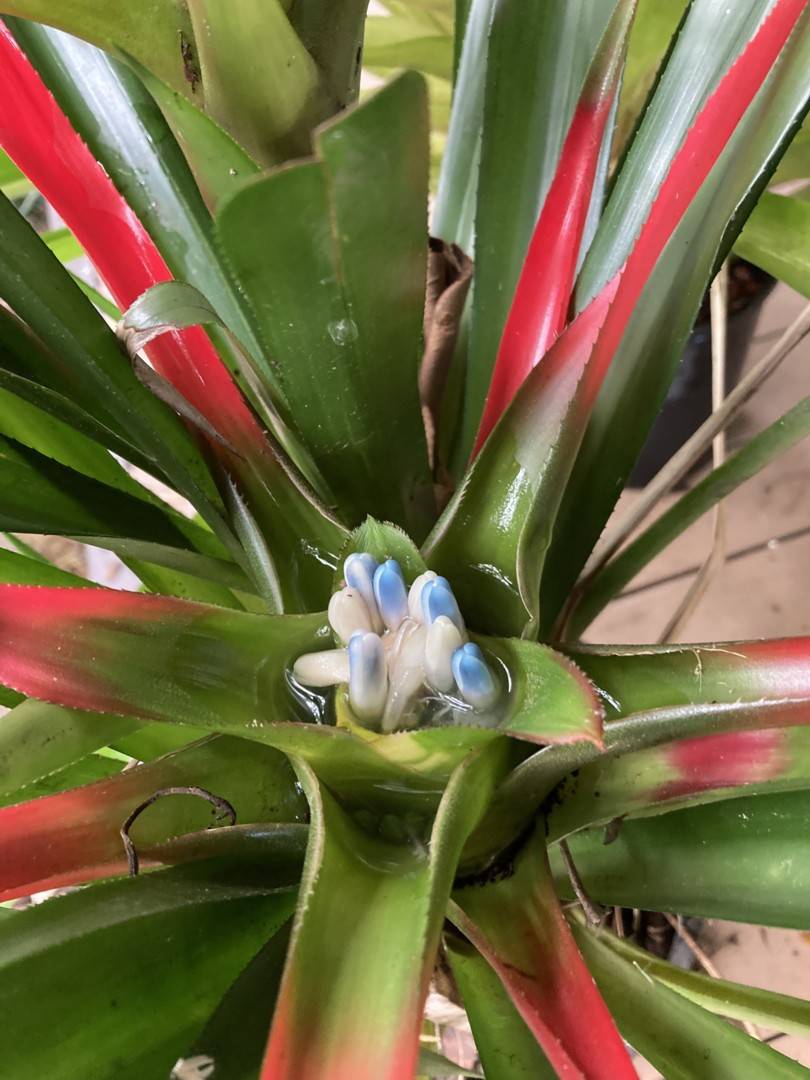

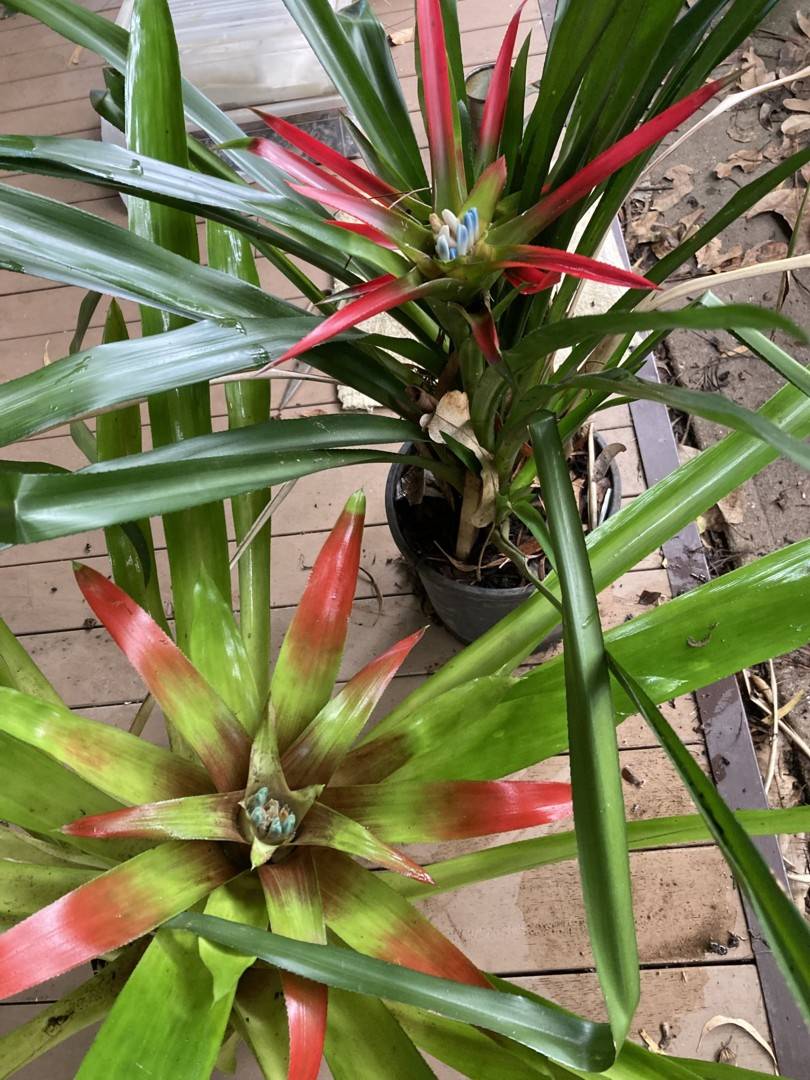
| Ian Hook 04/23 viridipetalum |
Ian Hook 04/23 angustifolium |
Ian Hook 04/23 angustifolium beside viridipetalum |
Nidularium viridipetalum Leme, Nidularium – Brom.Atl. Forest 109-110. 2000
A N. procerum Lindm., cui affinis, bracteis primariis prope basin atrovinaceis, prope medium viridibus, apicem versus rubris, laminis sublinear-triangularibus, sepalis basi 3-4mm connatis et petalis viridibus differt.
TYPE: Rio de Janeiro, Parati, R. Menescal & R. Bello s. n., fl cult. Mar. 1995. Holotype: HB. Paratype. Sertaozinho, km 128 Rio-Santos Road, 19 Feb. 1995, E. Leme 2935 (HB).
LEAVES 16 to 20, suberect-arcuate, forming an open funnelform rosette;
SHEATHS elliptic, 11-15 x 5-6.5cm, densely cinereous-lepidote, mainly the inner ones dark wine
BLADES sublinear, inconspicuously (inner ones) to distinctly (outer ones) narrowed toward base, 30-60 x 3-4cm, green, glabrescent, apex acute and apiculate, margins densely to sub densely spinulose, spines ca. 0.5mm long, 4-6mm apart.
SCAPE ca. 8cm long, ca. 0.6cm in diameter, greenish-white, inconspicuously brown-lepidote, shorter to equaling the leaf sheaths;
SCAPE BRACTS foliaceous, completely covering the scape, the basal ones distinctly longer than the inflorescence, the upper ones resembling the primary bracts.
INFLORESCENCE bipinnate, rosulate-stellate, ca. 6cm long, ca. 16cm in diameter, slightly elevated above the leaf rosette
PRIMARY BRACTS base broadly ovate, blade sublinear triangular, apex subacute to acute and apiculate, subspreading, the lower ones 13-14cm long, ca. 6cm wide at base, dark wine toward base, centrally green, red toward apex, densely white lepidote toward base, densely spinulose towards apex, spines ca. 0.5mm long;
FASCICLES ca. 8, the lower ones shortly pedunculate, 5-to-6-flowered, ca. 37 x 25mm;
FLORAL BRACTS triangular-lanceolate, apex acute and apiculate, spinulose at apex, ca. 24 x 11mm, carinate, inconspicuously brown-lepidote inside, greenish or reddish toward apex, equaling 1/2 sepal length.
FLOWERS sessile, ca 45mm long;
SEPALS narrowly elliptic, apex acuminate, 20 x 5-6mm, connate for 3-4mm, distinctly nerved centrally, glabrous, green toward apex or purplish-wine near the margins;
PETALS ca. 34mm long, connate for ca. 24mm, lobes ca. 9 x 5mm, ovate, green toward apex, becoming cream-colored after anthesis, with 2 inconspicuous callosities at base;
ANTHERS 6-7mm long, apex mucronulate, the antesepalous ones smaller and slightly surpassing the antepetalous ones;
STIGMA ellipsoid, blades 1.5mm long, with inconspicuously crenulate margins;
OVARY clavate, 10-12mm long, ca. 5mm in diameter, white toward apex, lilac toward base.
FRUITS slightly enlarged from the ovary, purple, the persistent calyx pale colored on the keels and dark blue on the margins.
ETYMOLOGY
The name chosen for N. viridipetalum comes from the association of the Latin viridis (= "green") and petalum (= "petal"), depicting the green color of the petals.
DISCUSSION
In spite of the apparent polymorphism of N. procerum, discussed above, I concluded that the suite of characteristics of this new taxon, which is visibly close to N. procerum, were discordant enough and so representative at the population level as to merit a separate species.
The traits that differentiate N. viridipetalum from N. procerum are as follows:
primary-bract coloration changes abruptly lengthwise from wine-colored near the base, to green in the middle and red toward the apex;
the acute to subacute blades are nearly linear, and not narrowly triangular-lanceolate and acuminate as in N. procerum.
Furthermore, the sepals of N. viridipetalum are more shortly connate for 3-4mm (instead of 5-8mm as in N. procerum)
and the petals are green (or more rarely yellowish green) without a bluish cast.
In terms of leaf anatomy, N. procerum (Leme 990) and N. angustifolium (Leme 1229) have completely lignified hypodermal cells in contact with the two epidermal surfaces, while in N. viridipetalum (Leme 2935) the hypodermis without chlorophyll occupies up to 1/2 the thickness of the blade and the palisade cells come into contact with the chlorenchyma (Sajo et al., 1998).
DISTRIBUTION & HABITAT
Nidularium viridipetalum is endemic to the municipalities of Angra dos Reis and Parati where it grows on rocks or as an epiphyte in the Atlantic slope forest understory from 100 to 400 m altitude. In Angra dos Reis, the populations overlap to a certain extent with those of N. angustifolium and N. meeanum. This species was seen flowering in February and March. The three clones that exist in cultivation were used in this study.
Updated 12/04/23









